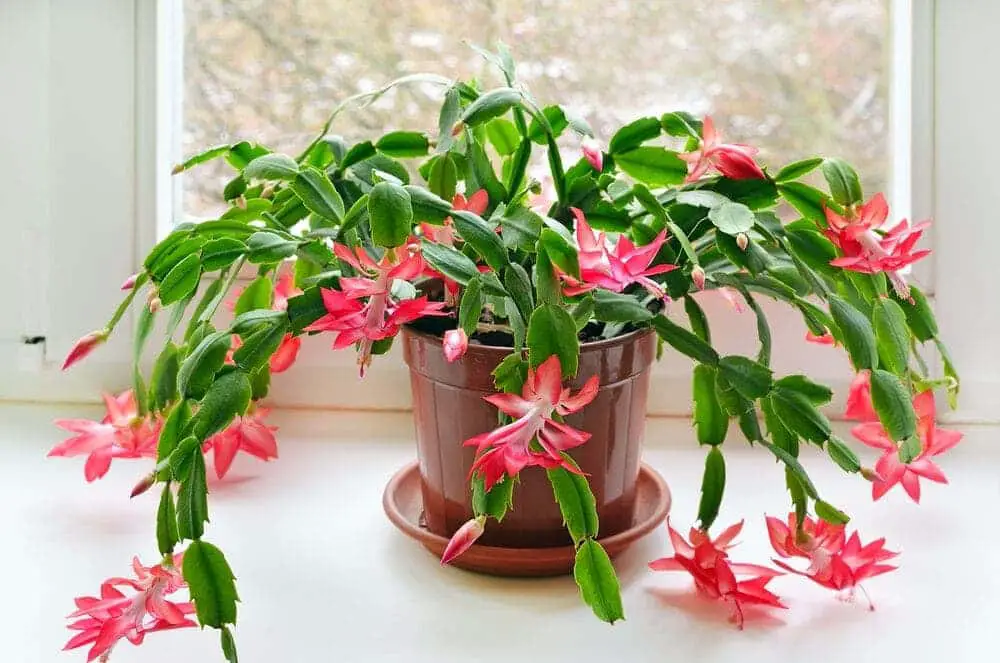


Whole Plant Traits: Plant Type: Epiphyte Herbaceous Perennial Houseplant Perennial Succulent Habit/Form: Arching Rounded Weeping Maintenance: Low.Attributes: Genus: Schlumbergera Species: truncata Family: Cactaceae Life Cycle: Perennial Recommended Propagation Strategy: Stem Cutting Country Or Region Of Origin: Brazil's rain forests Particularly Resistant To (Insects/Diseases/Other Problems): humidity Dimensions: Height: 0 ft.Tags: #showy flowers #houseplant #perennials #white flowers #succulent #easy to grow #pink flowers #red flowers #yellow flowers #fleshy leaves #epiphytic #tough plant #interiorscape #winter interest #pet friendly #herbaceous perennials #easy to propagate #fantz #humidity tolerant #winter flowers #Christmas decorations #non-toxic for dogs #non-toxic for cats #container plant Profile Video: See this plant in the following landscape: Cultivars / Varieties: VIDEO Created by Elisabeth Meyer for " Houseplants, Succulents, and Cacti", a plant identification course offered in partnership with Longwood Gardens. Flowers anthocyanin hued, apex strongly oblique.Root rot can be a problem with overwatered plants. Aphids, red spider mites, scale, and mealybugs are common insect pests. Insects, Diseases, and Other Plant Problems: Reduced flowering or dropping of flower buds can be from inadequate dark hours (at least 13 uninterrupted hours), sudden temperature, moisture, or light changes. If you purchase a plant that is labeled Christmas Cactus it is very likely not S. There are over 200 cultivars of these plants which give a variety of flower colors. The hybrid type determines when it will bloom. Most of the plants sold in stores today are hybrids of S. russelliana and S. The stems will take root after a few weeks. Plant in moist, well-draining potting mix and water when the soil is completely dry. Just remove two or three stem segments with a sharp knife and let it callous over for a few days. It easily propagates through stem cuttings. Repot the plant every three years or so, it does well being slightly pot-bound.

When new growth starts in the spring fertilize lighly monthly, reducing fertilizer in the fall and early winter. Or you can force it into blooming by exposure to night temperatures of 40 degrees for several successive nights. If you are lucky it will bloom a second time as the days lengthen in February. In the summer it will need some shade or the leaves will yellow out. Bathrooms are a popular spot. Plant it in a good draining succulent potting mix and place it in a warm room (57-72 degrees Fahrenheit) that receives bright light in the winter and high humidity. They grow in zones 10-12 and outside of that work best as houseplants. Though the word "cactus" is in the name, these plants do not do well in hot arid environments like other cactuses preferring the higher humidity climate of its native Brazilan rainforests. The blooms on this cactus are erect and do not hang down like the flowers on Schlumbergera x buckleyi. You can tell them apart because the Thanksgiving Cactus has claw-like appendages on its flat stems (or cladophylls) that resemble crab claws, hence of of its other common names Crab Cactus. It is also known by many other common names and is sometimes confused with the true Christmas Cactus ( Schlumbergera x buckleyi). This tough epiphytic succulent has showy flowers that bloom in the winter, usually around Thanksgiving, hence the most popular common name Thanksgiving Cactus. Phonetic Spelling shlum-BER-ger-uh trunk-AH-tuh Description


 0 kommentar(er)
0 kommentar(er)
